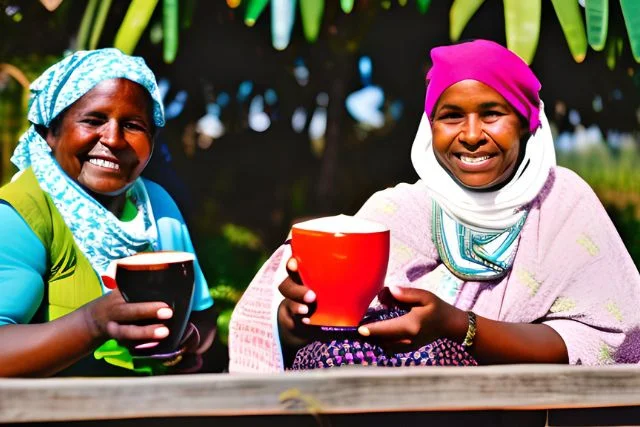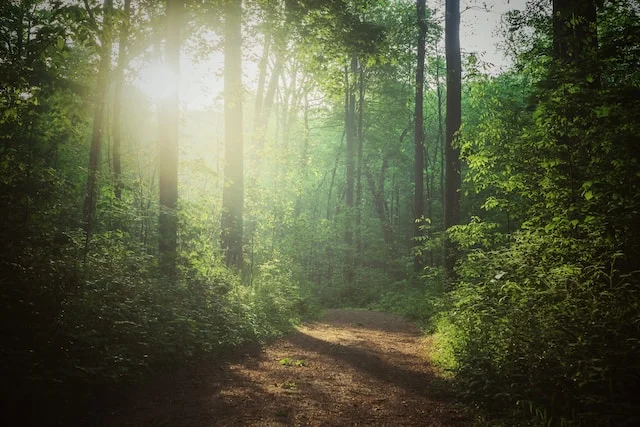Coffee and Forest Conservation: A Sustainable Brew
Introduction
Coffee stands among the most widely consumed and culturally cherished beverages globally, with over 400 billion cups enjoyed every year. For many of us, coffee marks a beloved daily ritual. But few coffee aficionados realize the complex relationship between coffee and forest conservation behind their daily cup.
As coffee cultivated worldwide has expanded dramatically since the 1970s, so too has deforestation for coffee production in many regions. This blog illuminates the ecological role forests play in sustaining coffee farming and discusses how certain cultivation practices damage forests. We’ll explore shade-grown coffee as a sustainable alternative that maintains biodiversity and forest health. By surveying coffee certification programs and challenges facing the industry, we’ll see how coffee lovers can help protect forests simply by the coffee they choose to purchase.
Key Takeaways
- Historical Shift: Coffee farming shifted from traditional forest-friendly practices to deforestation for sun coffee since the 1970s.
- Shade-Grown Benefits: Shade-grown coffee offers eco-advantages like biodiversity support, carbon sequestration, and reduced need for chemicals.
- Certification Support: Certification programs (Organic, Bird Friendly, Rainforest Alliance) promote sustainable coffee and reward responsible farmers.
- Challenges and Success: Sustainable coffee faces hurdles, but global initiatives show that coffee and forest conservation can thrive together.
The Coffee-Forest Connection
To understand how coffee agriculture impacts forests, we must first look at coffee’s natural origins. Coffee plants evolved under the forest canopy in Ethiopia, where they still grow wild today. Early coffee farming mirrored these natural conditions, with coffee cultivated under shade trees that provided ecological benefits like:
- Temperature regulation and air moisture
- Protection from sun damage and wind stress
- Control of soil erosion and improved soil fertility
- Watershed conservation
- Carbon sequestration

However, in the 1970s, a paradigm shift occurred as coffee production intensified. Growers increasingly cut down forests to plant coffee in the open sun. This coffee and forest conservation model promised higher coffee yields without competition for sunlight. But sun coffee monoculture has detrimental environmental impacts:
- Deforestation destroys biodiversity and critical habitat for birds, pollinators, and other wildlife
- Removing shade cover leads to soil degradation, increasing fertilizer use which pollutes waterways
- More sun exposure stresses coffee plants, requiring more pesticides
- Deforestation releases stored carbon in trees, exacerbating climate change
Millions of acres of forest have been razed for coffee production since 1970. These impacts reveal how the global coffee economy has developed at the expense of forests, threatening long-term sustainability.
Environmental Benefits of Shade-Grown Coffee
Shade-grown coffee provides a more eco-friendly model aligned with coffee’s natural forest origins. When cultivated under a diverse canopy of native trees, coffee farms mimic forest structure and help preserve biodiversity.
Specific environmental benefits of shade-grown coffee include:
- Providing habitat for birds, insects and other wildlife that are vital for pollination and pest control
- Sequestering carbon in shade tree biomass and soils, counteracting greenhouse gas emissions
- Enhancing soil health through leaf litter accumulation, controlling erosion and runoff
- Conserving watersheds by reducing polluted agricultural runoff into waterways
- Reducing requirements for synthetic fertilizers and pesticides compared to sun cultivation
Further, shade cover helps coffee plants thrive by protecting them from climate extremes, temperature fluctuations, and wind damage. This stabilizes yields and farmer income over time. Shade coffee demonstrates that coffee can align with ecological systems rather than degrade them when produced sustainably.
Sustainable Coffee Certification
In response to growing environmental awareness, several coffee certification programs now promote biodiversity protection and sustainable practices:
- Organic prohibits synthetic chemicals, genetically modified organisms, sewage sludge fertilizers, and ionizing radiation. It promotes using compost, animal manure, and green manure to improve soil health.
- Bird Friendly certification specifically requires shade cover greater than 40% density and diversity of shade tree species to protect bird habitat. Farms must also be USDA Organic certified.
- Rainforest Alliance standards prohibit the conversion of forests for coffee. Farms must maintain at least 30% shade cover and protect wildlife habitat. Pesticide use is restricted and waterways must be protected.

| Certification | Key Environmental Standards |
| Organic | Prohibits synthetic fertilizers, pesticides, herbicides, GMOs |
| Bird Friendly | >40% shade cover, native tree diversity, organic practices |
| Rainforest Alliance | 30% minimum shade, wildlife protections, agrochemical restrictions |
Purchasing certified coffees supports sustainable methods like shade growing, while providing price premiums to reward farmers for good practices. Expanding the sustainable coffee market is critical to shifting the industry.
Challenges in Promoting Forest-Friendly Coffee
Despite its advantages, sustainable coffee faces obstacles to mainstream adoption:
- Consumer misconceptions: Many coffee drinkers believe sun-grown coffee tastes better, unaware of shade coffee’s superior flavor. Considerable consumer education is still needed.
- Transition costs: Switching to shade systems requires significant upfront investment that many smallholder farmers cannot afford without technical and financial assistance. Access to credit is limited.
- Policy gaps: Governments often lack economic incentives like subsidies and tax breaks to assist farmers in adopting sustainable practices. Research, training, and extension services are underfunded but vital.
Overcoming these challenges will require coordinated efforts across sectors to raise awareness and empower coffee farmers to produce sustainably.

Success Stories in Coffee and Forest Conservation
In spite of difficulties, promising initiatives demonstrate that coffee farming and forest conservation are not mutually exclusive:
- In India, the Rainforest Alliance helped farmers increase shade tree cover and renew local springs by intercropping coffee with native trees. Many farmers adopted biodigesters and solar drying to reduce fuelwood needs and deforestation pressures.
- In Tanzania, Starbucks and Conservation International have trained over 200,000 farmers in sustainable methods under the Coffee and Farmer Equity (C.A.F.E) program. Participating farmers have higher coffee yields, income, and empowerment while reducing their environmental impact.
- Across Chiapas, Mexico, cooperatives increased shade cover and diversified into eco-tourism and organic agriculture with assistance from local NGOs. This improved habitat connectivity and stabilized landslide-prone areas. Some cooperatives protect the remaining cloud forest fragments in their community.
Through training, technical guidance, market access, and premium prices, these models show that coffee agriculture can align with forest conservation goals, supporting local livelihoods in the process. They offer replicable templates for balancing coffee, forests and development.

How Consumers Can Support Forest Conservation through Coffee Choices
Coffee drinkers can directly influence how coffee farming affects forests by choosing sustainable coffees:
- Seek out shade-grown or certified coffees to support responsible growing practices. Be willing to pay a small price premium when possible.
- Demand that your regular coffee companies expand their sustainably sourced coffees. Contact them through social media, letters, petitions, and calls to action.
- Help spread awareness of shade coffee’s conservation benefits among family, friends, and social media networks. Counter misconceptions about taste and quality.
- Advocate for government incentives for shade production, forest protection measures, and sustainability programs in coffee source countries.
Our daily coffee choices collectively influence landscapes across coffee-growing regions. So consider that with every cup, we can either threaten forests or help protect them.
Conclusion
Coffee’s future depends on the world’s forests – yet our coffee choices daily impact forests in return. When produced under shade, coffee farming can benefit biodiversity, ecosystem health, and rural communities. But deforestation for coffee poses risks to long-term sustainability.
As conscious consumers, we can steer coffee production toward models that sustain forests essential for quality coffee agriculture. By purchasing sustainably grown coffee, we invest in the future of the world’s forests and the future of coffee itself. Our cup can reshape the industry toward a model that conserves both precious forests and rural livelihoods across coffee-growing regions worldwide.








